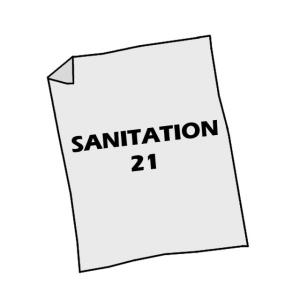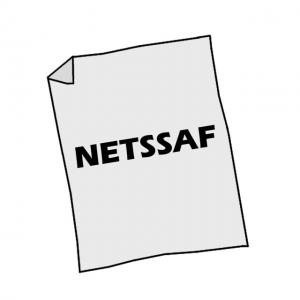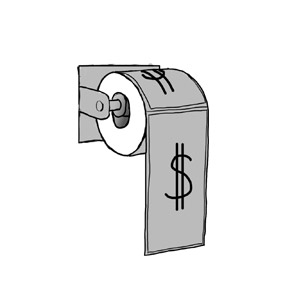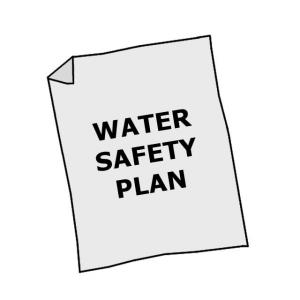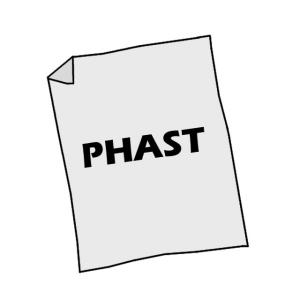Executive Summary
Sedimentation or thickening ponds are settling ponds that allow sludge to thicken and dewater. The effluent is removed and treated, while the thickened sludge can be further treated in a subsequent technology.
| In | Out |
|---|---|
| Faecal Sludge |
Compost (for further off-site composting), Soil, Treated Water, Fertigation Water or Water requiering further treatment |
Introduction
Faecal sludge is not a uniform product and, therefore, its treatment must be specific to the characteristics of the specific sludge. Sludge, which is still rich in organics and has not undergone significant degradation, is difficult to dewater. Conversely, sludge that has undergone significant anaerobic degradation, is more easily dewatered.
In order to be properly dried, fresh sludge rich in organic matter (e.g., latrine or public toilet sludge) must first be stabilised. Allowing the sludge to degrade anaerobically in sedimentation / thickening ponds can do this. The same type of pond can be used to thicken sludge which is already partially stabilised (e.g., originating from Septic Tanks, etc.), although it undergoes less degradation and requires more time to settle. The degradation process may actually hinder the settling of sludge because the gases produced bubble up and re-suspend the solids.
As the sludge settles and digests, the supernatant must be decanted and treated separately. The thickened sludge can then be dried or further composted.
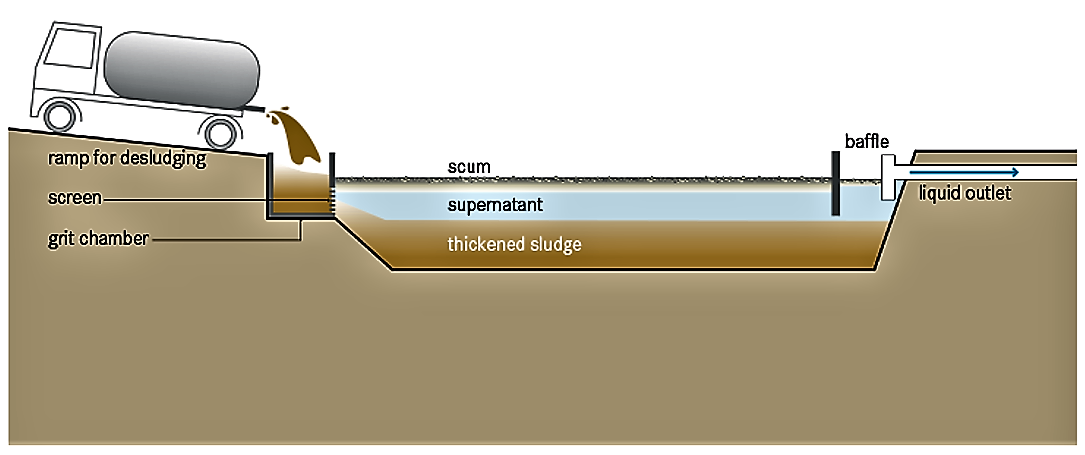
Design Considerations
Two tanks operating in parallel are required; one can be operated, while the other is emptied. To achieve maximum efficiency, loading and resting periods should not exceed 4 to 5 weeks, although much longer cycles are common. When a 4-week loading and 4-week resting cycle is used, total solids (TS) can be increased to 14% (depending on the initial concentration).
Health Aspects/Acceptance
Both the incoming and thickened sludge are pathogenic; therefore, workers should be equipped with proper protection (boots, gloves, and clothing). The thickened sludge is not sanitized and requires further treatment before disposal. Ideally, this technology should be coupled with a subsequent treatment technology if a hygienic product is required.
The ponds may cause a nuisance for nearby residents due to bad odours and the presence of flies. Thus, they should be located sufficiently away from residential areas.
Operation and Maintenance
Maintenance is an important aspect of well-functioning ponds, but it is not intensive. The discharging area must be maintained and kept clean to reduce the potential of disease transmission and nuisance (flies and odours). Solid waste that is discharged along with the sludge must be removed from the screen at the inlet of the ponds.
The thickened sludge must be mechanically removed (with a front end loader or other specialized equipment) after it has sufficiently thickened.
Sedimentation/thickening ponds are appropriate where there is inexpensive, available space located far from homes and businesses; it should be established at the border of the community. The thickened sludge is still infectious, although it is easier to handle and less prone to splashing and spraying.
Trained staff for operation and maintenance is required to ensure proper functioning.
This is a low-cost option that can be installed in most hot and temperate climates. Excessive rain may prevent the sludge from properly settling and thickening.
Solids Separation and Pond Systems for the Treatment of Faecal Sludges in the Tropics
The report sets out to provide guidelines for the preliminary design of faecal sludge treatment schemes comprising solids-liquid separation and stabilisation ponds. The document is based on the results of collaborative field research conducted by the Ghana Water Research Institute and SANDEC on full and pilot-scale faecal sludge (FS) treatment plants located in Accra, Ghana.
HEINSS, U. LARMIE, S.A. STRAUSS, M. (1998): Solids Separation and Pond Systems for the Treatment of Faecal Sludges in the Tropics . Lessons Learnt and Recommendations for Preliminary Design . (= SANDEC Report , 5 ). Duebendorf: Swiss Federal Institute of Aquatic Science (EAWAG), Department of Water and Sanitation in Developing Countries (SANDEC) URL [Accessed: 12.04.2010]SOS - Management of Sludges from On-Site Sanitation. Characteristics of Faecal Sludges and their Solids-Liquid Separation
This document gives an overview on the characteristics of different sludges as well as monitoring results and recommendations for design of solid-liquid separation. It is based on a field report.
HEINSS, U. LARMIE, S.A. STRAUSS, M. (1999): SOS - Management of Sludges from On-Site Sanitation. Characteristics of Faecal Sludges and their Solids-Liquid Separation. Duebendorf and Accra: Swiss Federal Institute of Aquatic Science (EAWAG)Faecal Sludge Treatment
This document reviews current practices of faecal sludge management and treatment.
MONTANGERO, A. STRAUSS, M. (2004): Faecal Sludge Treatment. Duebendorf: Swiss Federal Institute of Aquatic Science (EAWAG), Department of Water and Sanitation in Developing Countries (SANDEC) URL [Accessed: 10.06.2019]Faecal Sludge Management
This is the first book to compile the current state of knowledge on faecal sludge management. It addresses the organization of the entire faecal sludge management service chain, from the collection and transport of sludge, to the current state of knowledge of treatment options, and the final end use or disposal of treated sludge. It presents an integrated approach that brings together technology, management, and planning, based on Sandec’s 20 years of experience in the field. It also discusses important factors to consider when evaluating and upscaling new treatment technology options. The book is designed for undergraduate and graduate students, engineers, and practitioners in the field who have some basic knowledge of environmental and/or wastewater engineering.
STRANDE, L. ; RONTELTAP, M. ; BRDJANOVIC, D. (2014): Faecal Sludge Management. Systems Approach for Implementation and Operation. London: IWA Publishing URL [Accessed: 16.07.2014]
